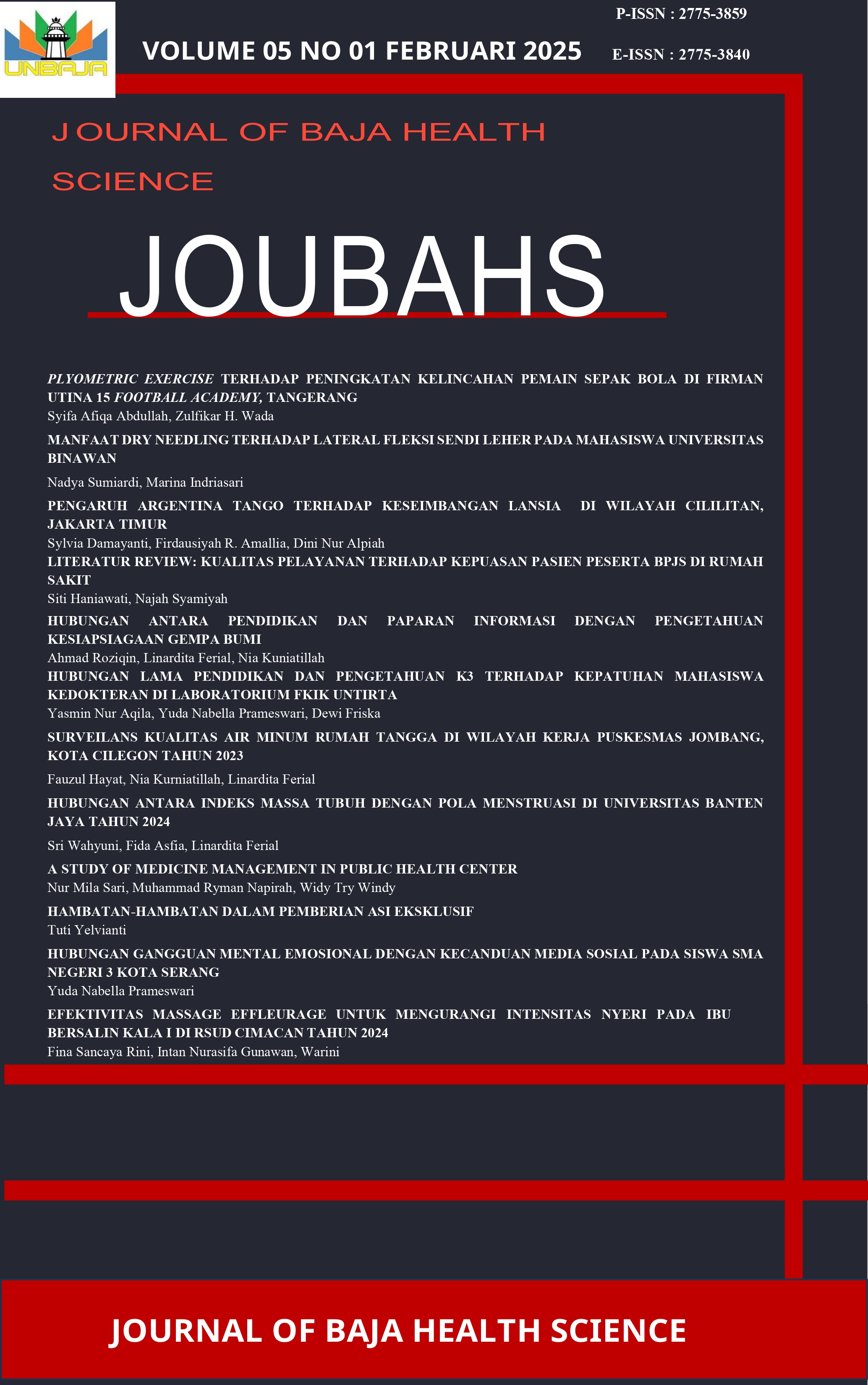A STUDY OF MEDICINE MANAGEMENT IN PUBLIC HEALTH CENTER
DOI:
https://doi.org/10.47080/joubahs.v5i1.3889Keywords:
Management, Drug, Public Health CenterAbstract
In Indonesia, drug expenditures that have been roughly fourty percent are seen as exorbitant. Drug availability is decreased, pharmaceuticals become scarce, a large number of drugs accumulate as a result of poor drug planning, and irrational drug use drives up drug costs. The aim to Find out about the Public Health Center's drug needs planning, distribution, storage, and recording and reporting is the goal. design of qualitative research using a case study methodology. In their working area, the Public Health Center and Integrated Service Center, this study was carried out in 2017. The Public Health Center's director served as the study's primary informant. The result is Public Health Center and the Health Office collaborate to plan for drug needs; nonetheless, some medications are required but not included in the e-catalog. The Public Health Center's drug storage is set up according to the FIFO and FEFO systems, but there are no dedicated cabinets for narcotics and psychiatric medications, and the air temperature does not yet meet regulations. Unavailable medications cause problems with patient medicine distribution, leading to ineffective and inefficient services. Due to a shortage of pharmaceutical health workers, drug recording and reporting are not completed on time. According to the study's findings, there are challenges with drug management at the Public Health Center, ranging from organizing drug requirements, storing, distributing, and recording and reposrting drugs.
References
Chaira S, Zaini E, Augia T. (2016). Evaluasi Pengelolaan Obat pada Puskesmas di Kota Pariaman. Jurnal Sains Farmasi dan Klinis. 3(1):35–41.
Djuna S, Arifin MA, Darmawansyah. (2014). Studi Manajemen Pengelolaan Obat di Puskesmas Labakkang Kabupaten Pangkep. Administrasi Kesehatan Indonesia. 3(2):1–13.
Husnawati, Aryani F, Juniati A. (2016) Sistem Pengelolaan Obat di Puskesmas Di Kecamatan Rambah Samo Kabupaten Rokan Hulu-Riau. Journal of Pharmacy. 13(1):71–83.
Irmawati LI. (2014). Buku Ajar Petunjuk Praktis: Manajemen Logistik Farmasi di Rumah Sakit. Surabaya: Universitas Press: Institut Ilmu Kesehatan.
Peraturan Menteri Kesehatan Republik Indonesia Nomor 30 Tahun 2014 Tentang Standar Pelayanan Kefarmasian di Puskesmas.
Kumar S, Dieveney E, Dieveney, A. (2013). Reverse Logistic Process Control Measures For The Pharmaceutical Industry Supply Chain. International Journal of Productivity and Performance Management. 58(3):188-204.
Larasati I, Susilo H, Riyadi. (2013). Analisis Sistem Informasi Manajemen Persediaan Obat. Jurnal Administrasi Bisnis. 1(1):57–67.
Lumintang PD, Maramis FR, Kolibu FK. (2016). Analisis Pengelolaan Obat di Puskesmas Tompaso Kabupaten Minahasa. Jurnal Kesehatan Masyarakat Universitas Sam Ratulangi Manado. 2(1):1–9.
Murukiah, Arumugam. (2012). A Framework for Public Drug Distribution System In India. The Journal International Journal of Logistics Systems And Management. 13(1):317-341.
Nurniati L, Lestari H, Lisnawaty. (2016). Studi Tentang Pengelolaan Obat di Puskesmas Burangan Kabupaten Wakatobi. Jurnal Kesehatan Masyarakat. 1(1):1–9.
Rikomah, Setya E. (2016). Farmasi Klinik. Yogyakarta: Deepublish.
Rosmania FA, Supriyanto S. Analisis Pengelolaan Obat Sebagai Dasar Pengendalian Safety Stock Pada Stagnant dan Stockout Obat. Jurnal Administrasi Kesehatan Indonesia. 3(1):1–10.
Sasongko H, Octadevi OM. (2016). Overview Drug Procurement Management Indicators In Sukoharjo Central Java Hospital. Journal Of Pharmaceutical Science and Clinical Research. 1(1): 21–28.
Siregar, Charles JP, Amalia L. (2003). Farmasi Rumab Sakit: Teori dan Penerapan Cetakan I. Jakarta: Buku Kedokteran EGC.











